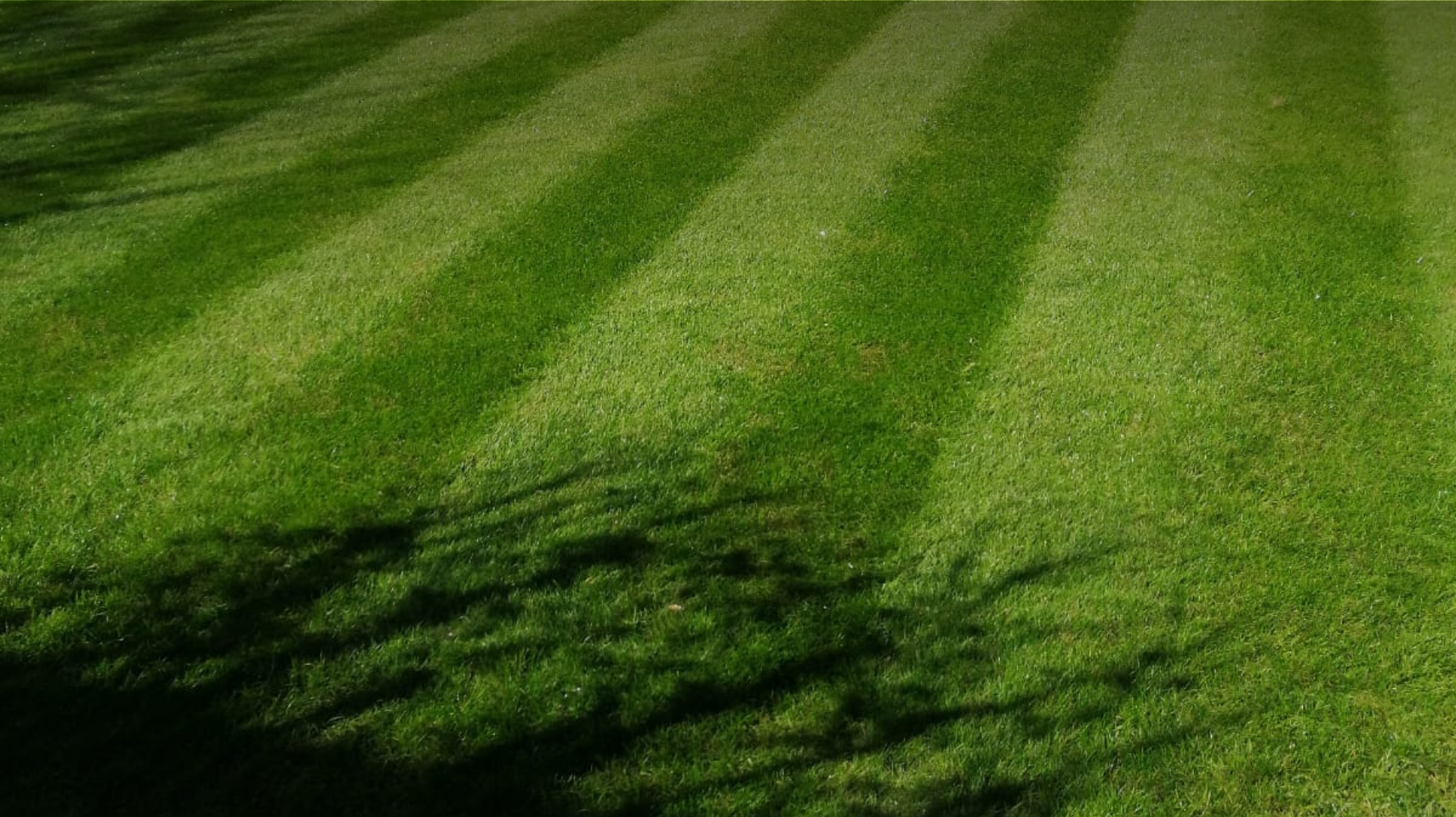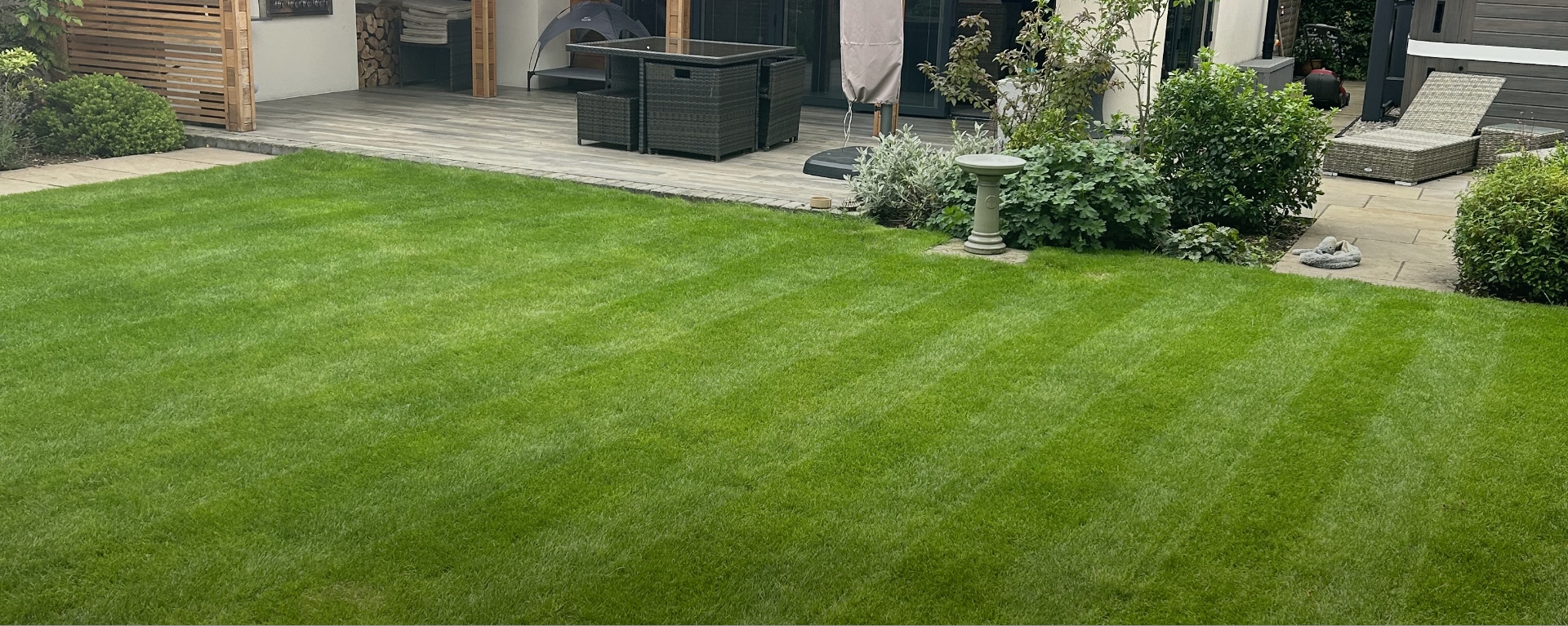
Lawn Care Guide
Experiencing lawn problems is inevitable, despite how
well-maintained it may be. We have compiled a list of the most common issues to help you identify them and advise on how to treat them.
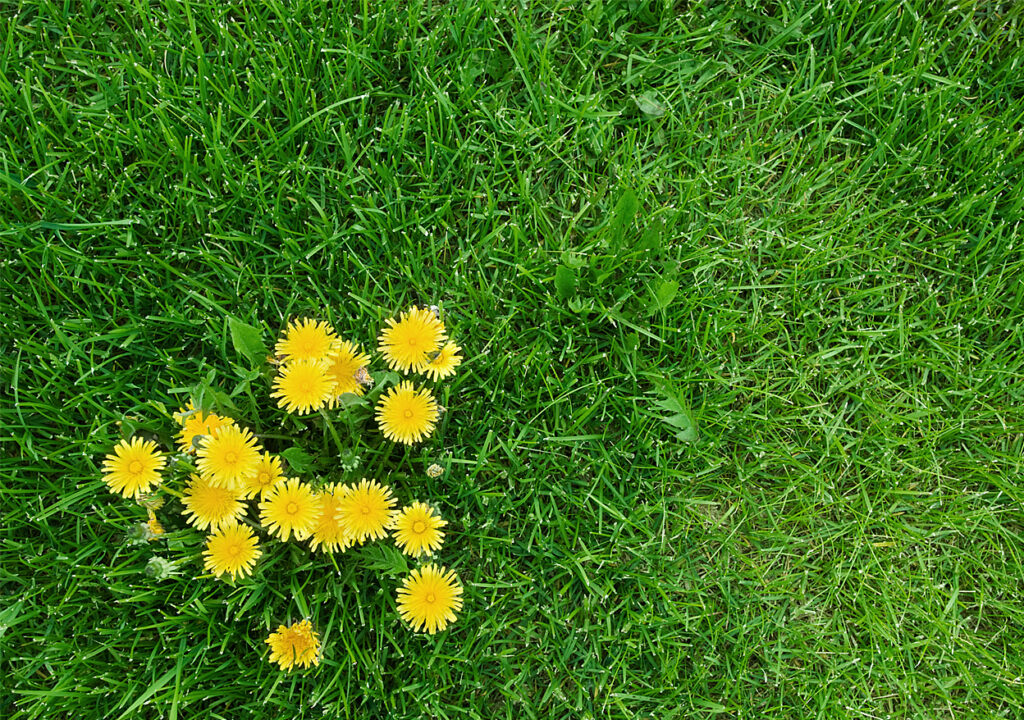
Weed Control
Weed control has evolved significantly in recent years, with new products being much safer and environmentally friendly. However, this has made weed control more challenging. Previously, we used pre-emergence products in Spring to prevent weeds throughout the year, but these have been rightly banned. Now, we can only use post-emergence products, treating visible weeds as they appear. Our current weed control comprises a mix of three different products to address the broad spectrum of weeds found in lawns.
Environmental sustainability and health and safety have always been our top priorities. We continuously seek safer products, not only for weed control but across all aspects of our business, benefiting both ProGrass and PowerPro.

Chafer Grubs
Chafer grubs are young maggot-like larvae before they hatch into chafer beetles. When present in large quantities in lawns, they can cause serious damage by feeding on grass roots. Additionally, crows, foxes, and badgers may further damage the grass while searching for these grubs during their active months.
After a long wait, the good news is a new insecticide called Acelepryn has been approved for controlling leather jackets and chafer grubs in lawns. This is now the only insecticidal solution for controlling chafer
grubs.
For chafer grubs, Acelepryn is best applied between June and October, ideally after cutting the grass quite short to ensure it reaches the soil surface. It is also beneficial to mix it with a wetting agent as this improves the product performance.
Acelepryn can only be applied professionally by a qualified lawn technician. However, the best product for individuals wishing to treat chafer grubs themselves is nematodes, though mixed results should be expected when using them.
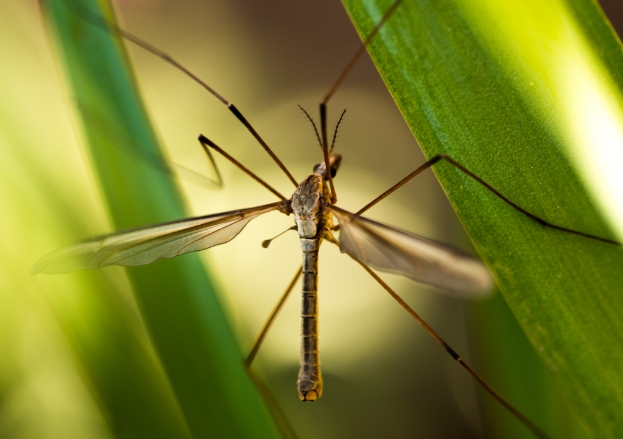
Leather Jackets
Leather jackets are the larvae of the crane fly, commonly known as daddy long legs. When present in large quantities in the lawn, they can cause serious damage by feeding on grass roots and young shoots. Further damage can also be caused by crows, foxes, and badgers, which will all tear up the grass while searching for these grubs during their active months.
After a long wait, the good news is a new insecticide called Acelepryn has been approved for controlling leather jackets and chafer grubs in lawns. This is now the only insecticidal solution for controlling leather jackets.
For leather jackets, this is best applied between June and October, ideally after cutting the grass quite short so it reaches the soil surface. It is also beneficial to mix it with a wetting agent as this improves the product’s performance. Acelepryn can only be applied professionally by a qualified lawn technician. However, the best product for anyone wishing to treat leather jackets themselves is nematodes but be prepared for mixed results when using them.
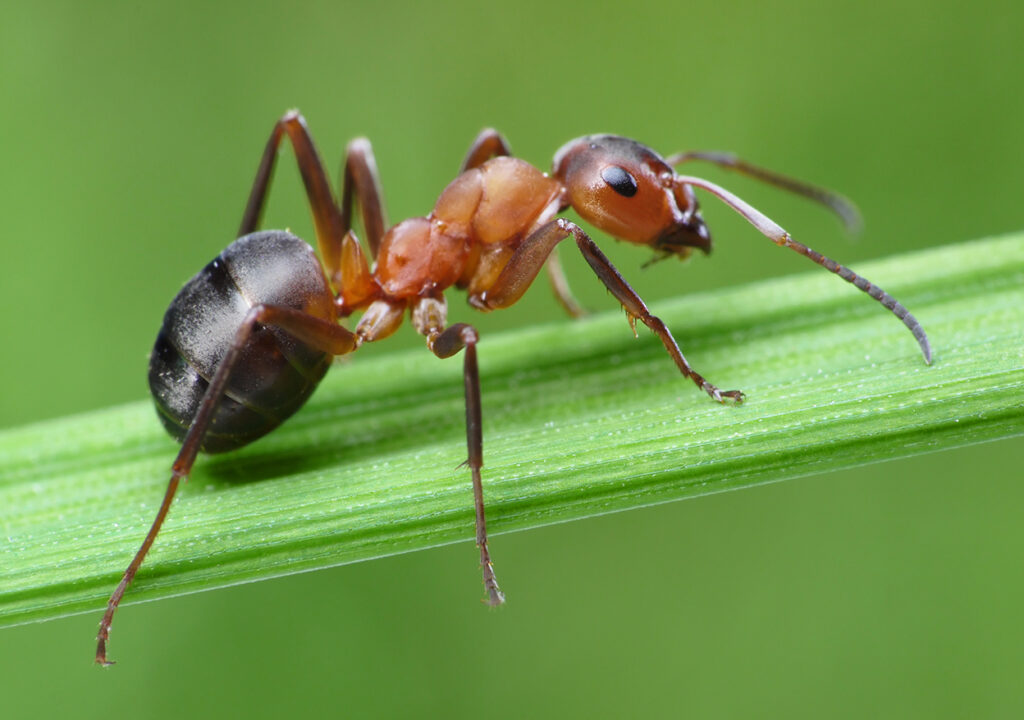
Ant Control
Ants seem to be an ever-increasing problem in lawns. Lawn ants are usually yellow meadow ants, and when present in large quantities, they can create unsightly raised mounds by bringing surface soil to the surface. The biggest issue with lawn ants is that, rightly so, due to environmental concerns, all previous control treatments have been banned. However, the best and safest way to treat them is as follows:
Whenever you notice activity such as soil on the surface, use a stiff brush or lawn rake in dry conditions to sweep it across the lawn. This action is meant to annoy the ants and prompt them to move. If left in one place, they will raise the ground into a hump and kill the grassroots in that area. Consistent action may encourage them to move off your lawn completely.
Additionally, I have received good feedback from customers who have applied diatomaceous earth pest grade. This method is very safe and easy to use.
Another treatment option is ant nematodes, which are a completely safe biological treatment. They are applied to the nest via a watering can in wet conditions when the ants are active. These live microscopic worms irritate the ants and prompt them to move. Repeat treatments may be necessary, and in most cases, because they are easy to apply, our customers can do it themselves. Ant nematodes are available in some garden centres and online.
In extreme cases where the raised areas and lawn damage have become unmanageable, ProGrass can organise a no-obligation inspection to provide a quote for repairing the damaged areas.
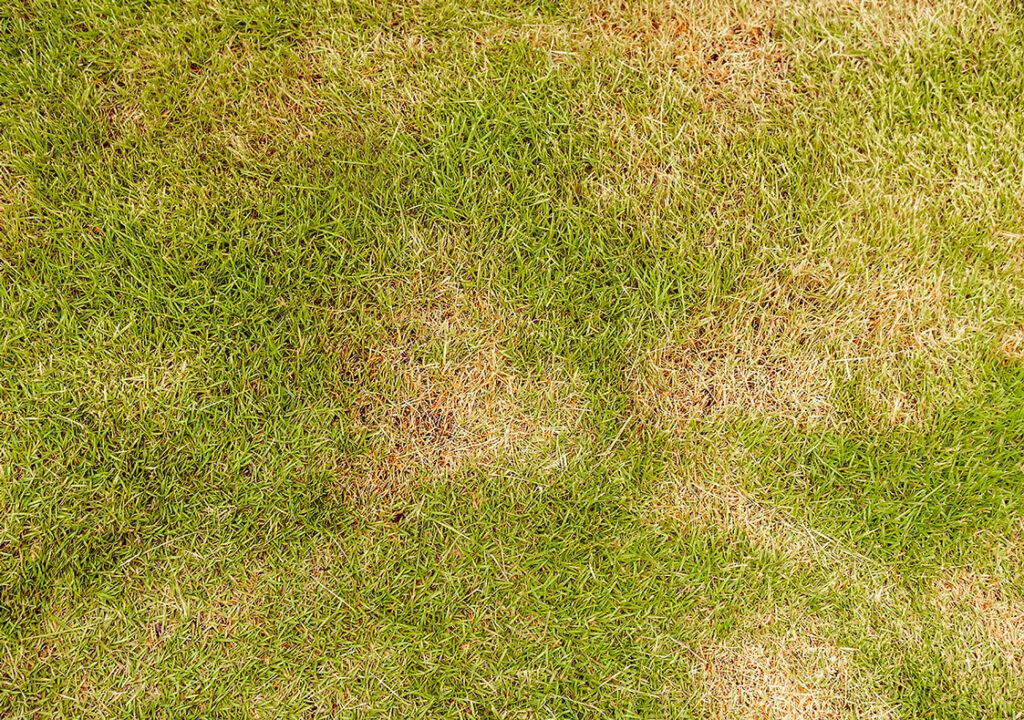
Brown Lawns
There are many reasons why lawns can turn brown or develop brown patches. These reasons could include soil compaction, incorrect fertiliser application, fungal infections, cutting the grass too short, poor irrigation during dry weather, overwatering, and surprisingly, excessive water from intense rainfall. Another soil condition called dry patch occurs when the soil becomes hydrophobic and cannot retain water. The potential solutions can vary greatly, such as aeration, wetting agents, anti-fungal sprays, professional fertiliser application, or adjusting the mower blade height. Therefore, it is crucial to identify the underlying reason first. This can be achieved by contacting ProGrass for a visit and inspection.
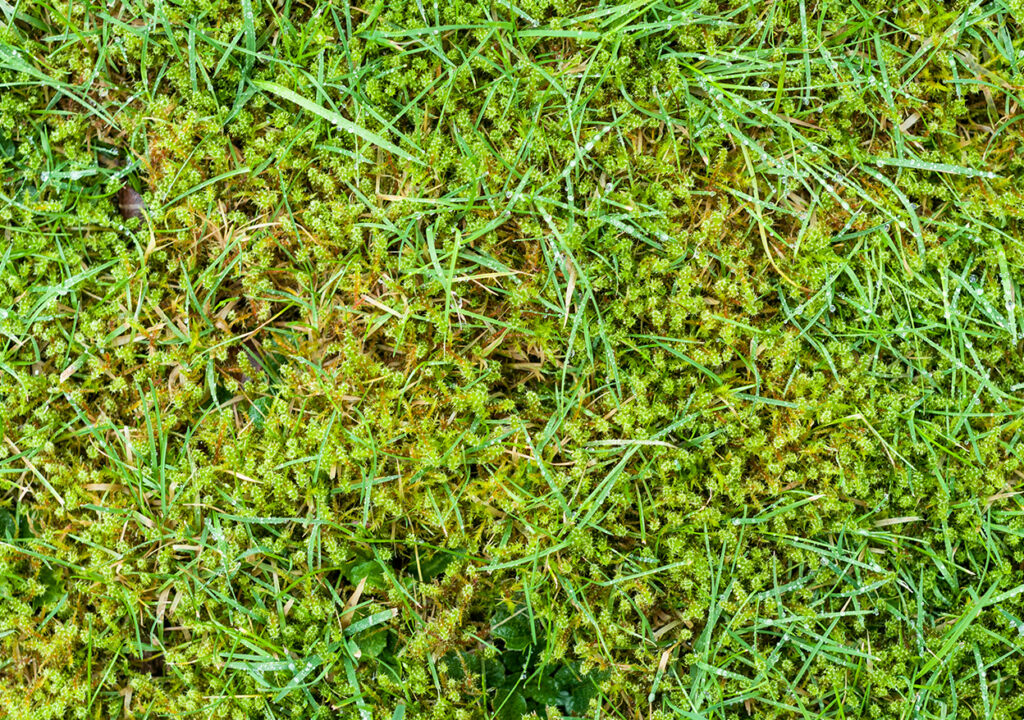
Mossy Lawns
The deceptive and only good thing about moss is that it is green, so it may not be very noticeable among the nice, healthy, green grass of the lawn. However, when the balance between moss and grass starts swaying too much in favour of the moss, your lawn is in great danger. The healthy grass will be crowded out and struggle to survive, and if not careful, the lawn will become mainly moss with very little grass in it. This primarily occurs during the autumn and winter months when moss spores are active, especially in dark, damp, and shady areas.
Moss can be controlled by fertilizers containing iron. However, to maintain the right balance in favour of the grass, mechanical work such as aeration and especially scarification may be needed. At ProGrass, we have tried and tested procedures and methods to ensure moss is kept at bay. Please get in touch if you feel there is a problem with too much moss in your lawn.
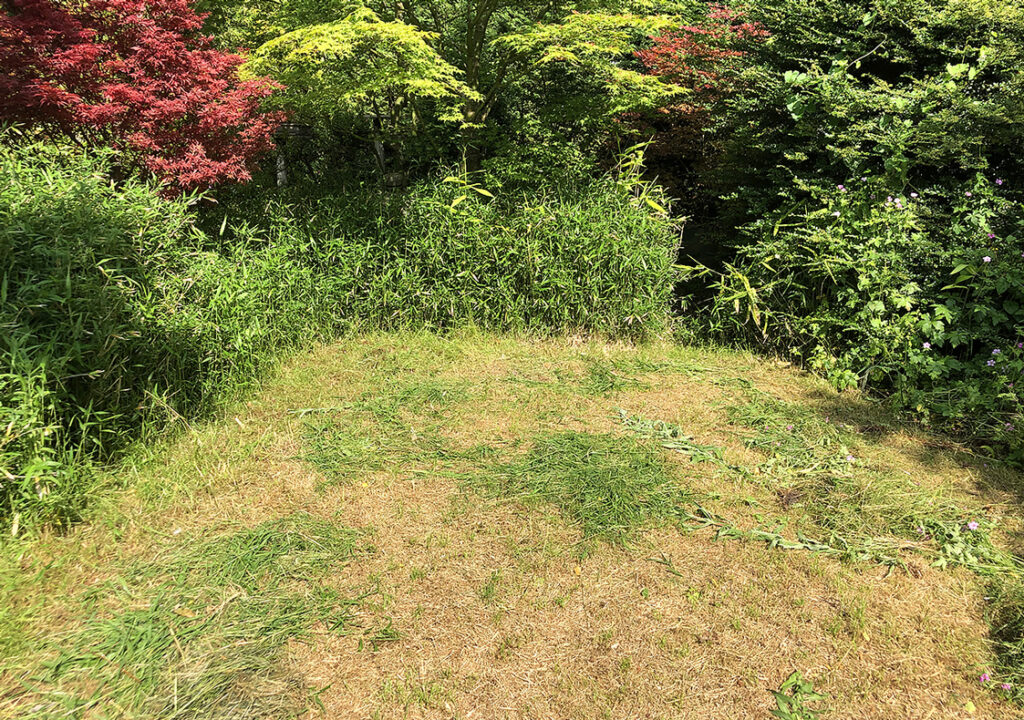
Patchy Lawns
There are quite a few reasons why lawns can become patchy, and this could include areas with no grass or just discoloured areas where the patches are a different green or even brown. One of the most common causes would be a soil condition called dry patch where the soil becomes hydrophobic and cannot hold water. Other reasons could be fungal infections, incorrect fertiliser application and even poor mowing by cutting too short, especially on undulated lawns. After identifying the problem treatments include aeration, application of a wetting agent, anti-fungal sprays, raising the blade height of the mower and a professionally applied balanced fertiliser.
If you are unsure of the reasons for your patchy lawn and require ProGrass to visit and inspect, please get in touch.
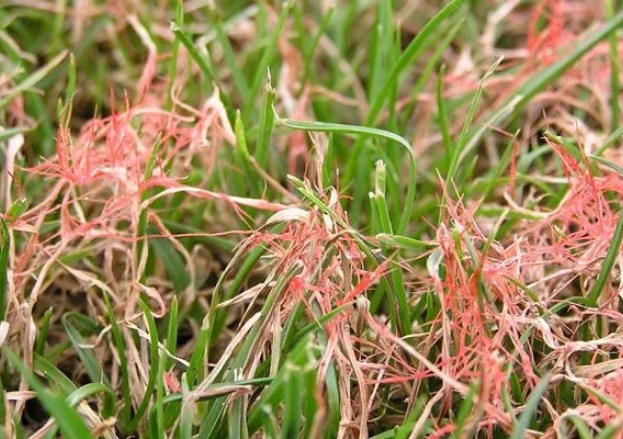
Red Thread
Red Thread is a fungal infection that causes discoloured patches on your lawn. It mainly appears in summer and autumn, especially during damp weather conditions. You can identify it by plucking some grass from one of the patches, and visually, you’ll see strands of red among the discoloured grass. The good news is it is harmless as it does not attack the root zone. However, cosmetically, you do not want it spoiling the look of your lawn, especially during the peak summer months. It usually affects nitrogen-deficient, stressed lawns. Treating it with a good dose of high-nitrogen fertiliser will usually stop the attack, but it may take a few weeks and a couple of grass cuts to cure. In extreme cases, and to ensure the lawn is cured, an anti-fungal spray could be applied.
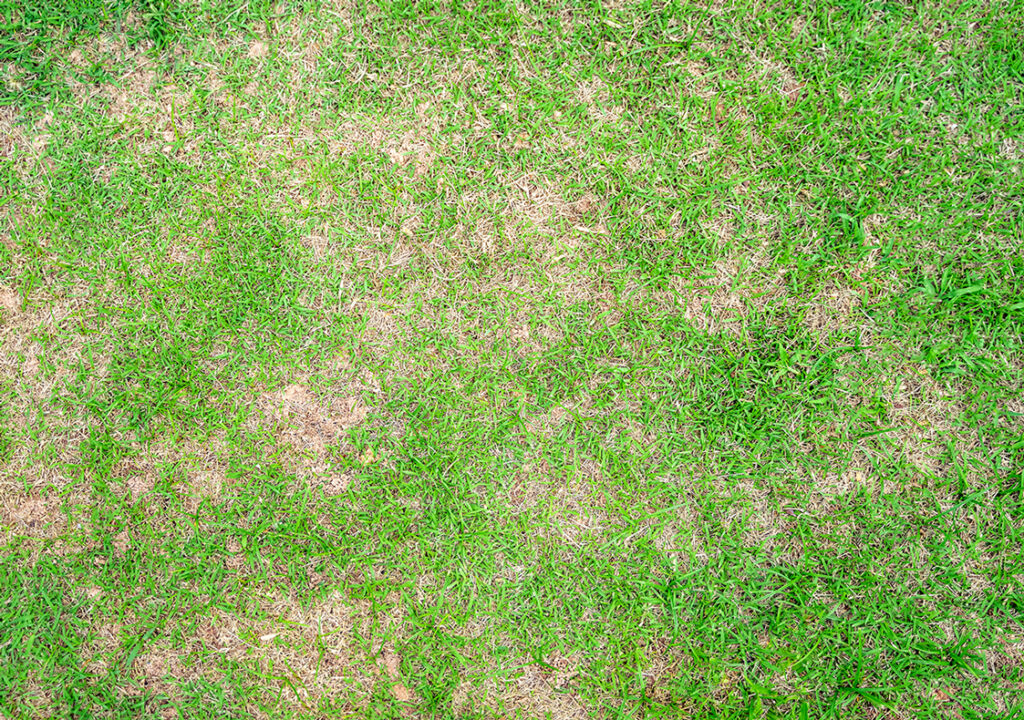
Fusarium
Fusarium is one of the most damaging diseases of turf grasses and can be difficult to control. It is most frequently found during autumn, winter, and early spring, but attacks can occur at any time of the year. The disease is sometimes very noticeable after thaws of snow when it is also known as Snow Mould. Fusarium is a far nastier cousin of Red Thread, and it can be identified initially by small patches of yellowish-brown dying grass, which often grow larger and merge into other patches to cover much larger areas. A white or pinkish cottony growth may be visible in the patches.
The cure is a professional application of an anti-fungal spray.
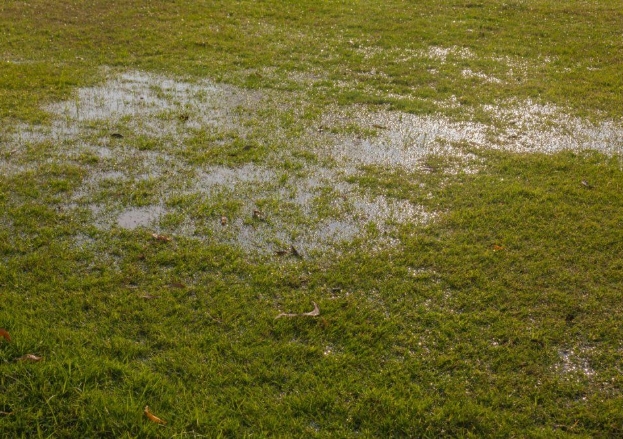
Boggy Lawn
In boggy lawns, the lawn appears to be saturated and holds water when it shouldn’t. Poor drainage is often the cause, but even installing expensive land drains may help but not solve the problem in extreme weather conditions. Another cause is soil compaction, which prevents water from escaping. Hollow tine aeration, reducing soil compaction, and allowing water to escape, will improve things. Cutting the grass at a higher setting will also help. If water frequently stands in certain undulated sunken areas, it is worth building up these areas with lawn topsoil and seed.
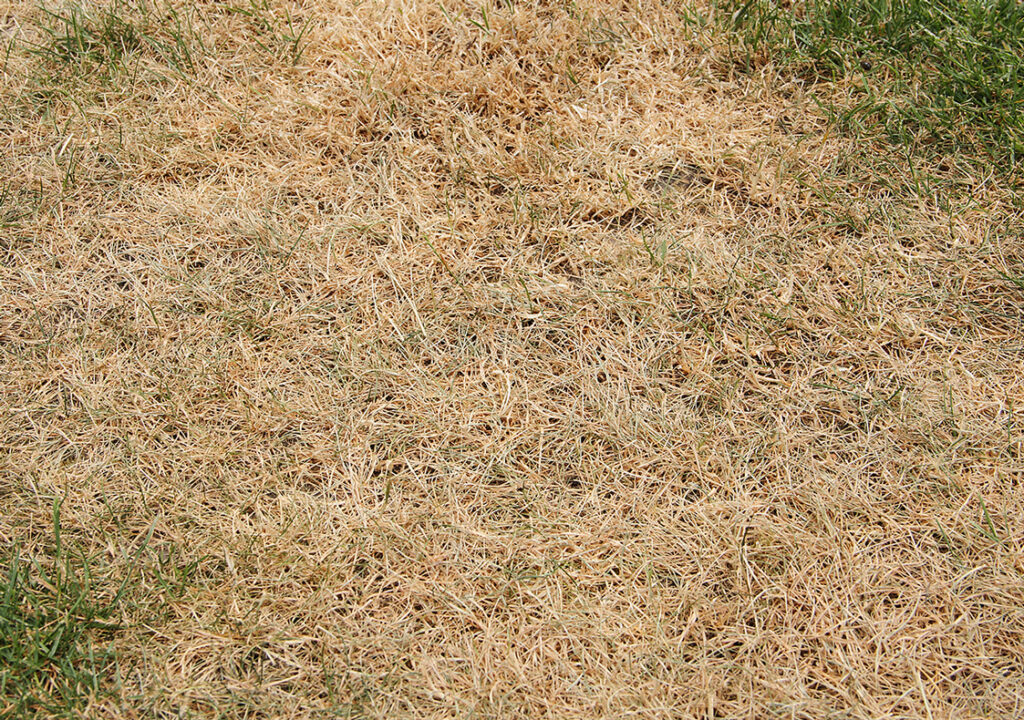
Drought and Watering advice
In periods of dry weather, your lawn will greatly benefit from a good soaking to prevent it from drying out and turning brown. We would recommend doing this either early in the morning or in the evening when the sun has gone down to avoid evaporation or scorching in the hot sun. Recommended watering times can be challenging to determine as all lawns differ, and it also depends on water pressure, weather temperatures, and the sprinkling system used. However, a rough guide would be 20/30 minutes.
Watering after fertiliser applications is also recommended in dry weather conditions to activate the product. Additionally, cutting the grass at a higher setting in drought conditions will help, as grass stores its moisture and nutrients in the stalk and the root. This increased capacity will keep the grass greener for longer.
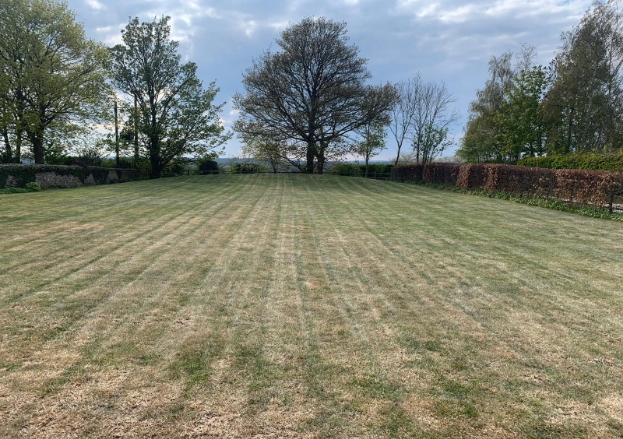
Lawn Scarification Aftercare
It is important to remember that after your lawn has been scarified, it undergoes significant stress. So, don’t be alarmed if it looks a bit battered and bruised. Joe, our Agronomist, has always said that the worse it looks, the better job we have done. Scarification, if done properly, will leave the lawn quite bare, so overseeding afterwards is the best way to help your lawn recover. Although grass is a great survivor, it will need a period of rest to recover, especially if it has been overseeded as well. Watering and the application of a suitable fertiliser will be hugely beneficial if dry weather is expected, and if seeded, try to avoid cutting until it looks ‘scruffy’.
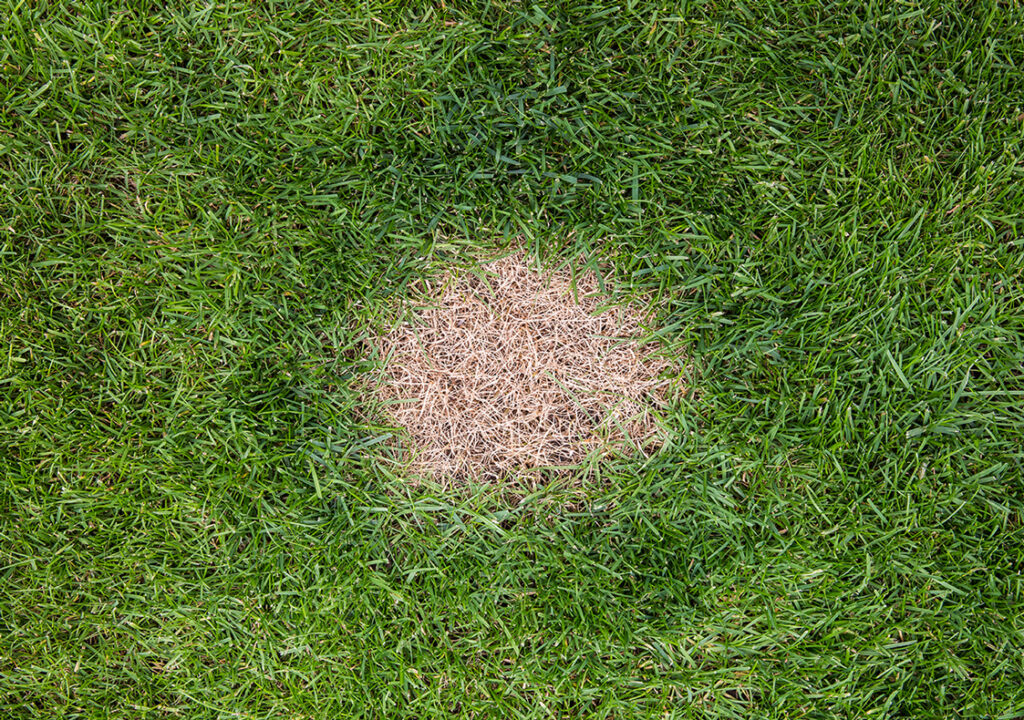
Dog Pet Patches
I can speak from experience on this subject. Having our company office dog Amber (see Meet the Team) has taught me that pet patches from a dog can spoil the look of your lawn unless you keep on top of it. Not all dogs cause the patches but if you have one that does, my tactic is to keep a couple of filled watering cans in strategic positions around the lawn. When I see Amber having a wee, I grab one and race over to water the area, preventing the need for repair later. Unfortunately, the urine will kill the root zone of the patch, so it will not recover without repair.
To repair the patches, I mist with the watering can (I usually wait for 2 or 3 to appear), I first scratch out the dead grass with a small garden fork. Then, I rough up the underlying subsoil, even poking some holes in to aerate it. I will then mix a compound of lawn topsoil and seed, which I keep handy, and spread the mix into the patch. Alternatively, you can buy ready-mixed patch repair products from garden centres if this is easier for you.
If the strength of the dog urine is not quite enough to scorch the lawn, it can sometimes act as a fertiliser, leaving your lawn with darker green patches. If this happens and becomes unsightly, the best way to level the different greens up is to apply a suitable fertiliser.
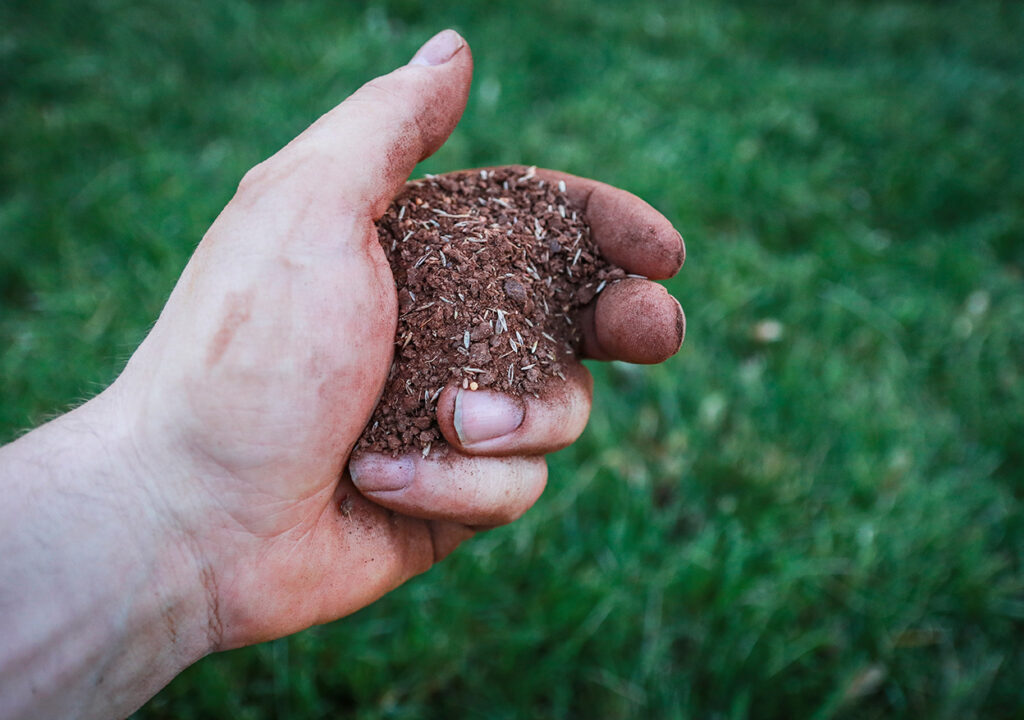
Overseed and Patch Repair Advice
An often-asked question about overseeding is, “when should I see the grass shoots emerging after the seed is sown?” There is no fixed answer as it all depends on many factors, such as the type of seed, ground preparation, weather conditions, watering, etc. However, a rough guide would be 2-4 weeks. At ProGrass, we try to avoid fast-germinating grass seed as it tends to have a shallower root zone. We also change the type of seed depending on the time of year and predicted weather conditions.
Advice for aftercare would be to avoid activity on the bare areas, especially when the tender shoots start to emerge. Try to irrigate in dry conditions, especially on the bare areas. Avoid mowing after sowing until it looks scruffy, and then mow at a high setting until the grass has matured and strengthened. A balanced fertiliser will also be beneficial to encourage the seed to germinate.
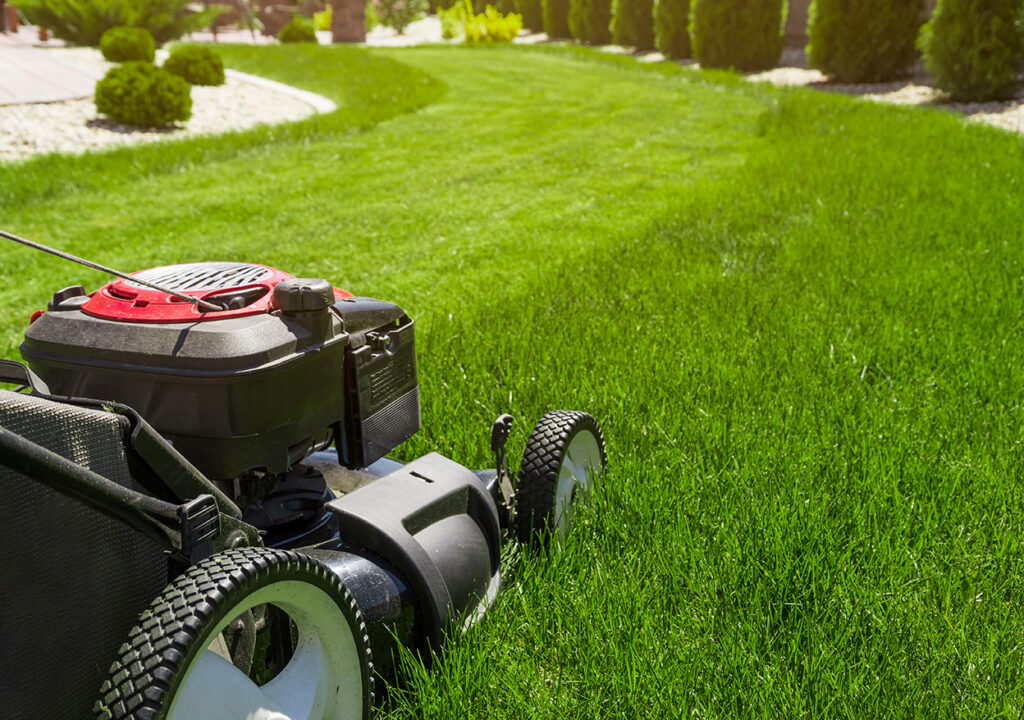
Mowing Advice
One of the first pieces of advice I give to a customer during a lawn health check and quotation is a few simple instructions on cutting grass. This is as important as anything we do and can make a huge difference to the lawn’s appearance.
Cut Height: One of the biggest mistakes made is cutting the grass too short. At ProGrass, we recommend a minimum cut height of 30mm/1inch. Grass stores its moisture and nutrients in the stalk and the root zone, so the shorter it is, the less storage capacity it will have. In dry weather conditions, it will lose its colour faster. Short grass also often exposes what we do not want to see underneath (thatch and moss), so keeping it longer helps to maintain a nice, even green sward.
Cut Frequency: Cutting little and often is key, and the frequency will depend on how quickly it is growing. Try to avoid having to take more than a third off, but if this happens, cutting twice on a high setting first will leave a better finish.
Equipment: Investing in a good quality lawnmower (possibly with a roller if you like stripes) and keeping it well maintained with sharp blades.
Following these guidelines, combined with the treatments that we can offer, will have your garden looking in top shape.
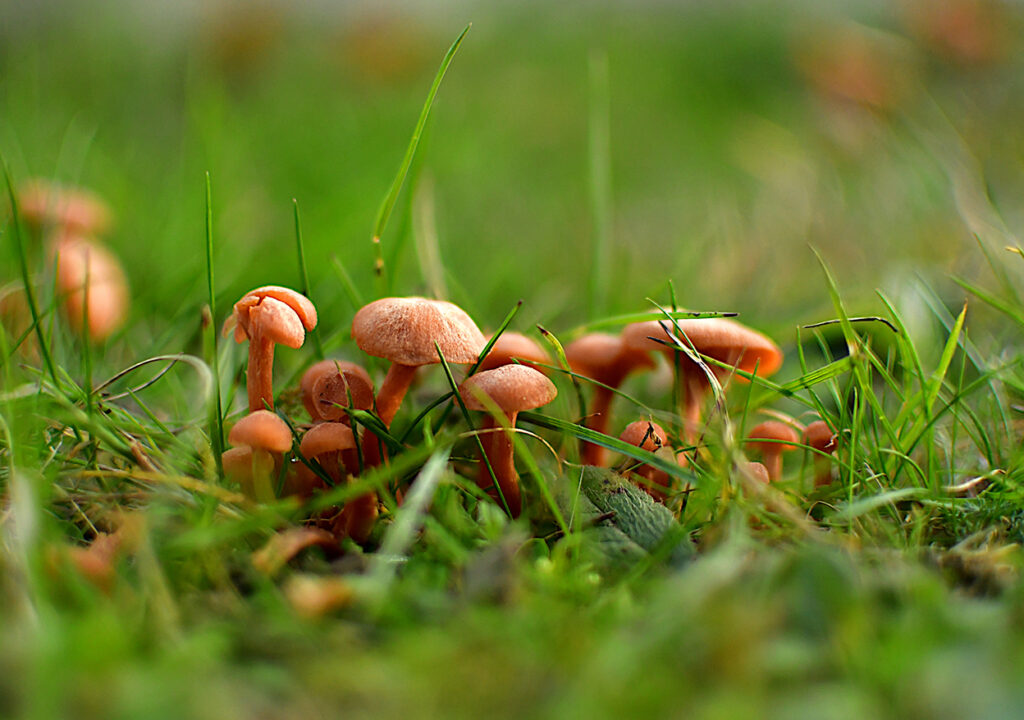
Mushrooms & Toadstools
If you have mushrooms or toadstools on your lawn, take it as a compliment. It means that the soil is nutritious and has a healthy ecosystem. The good news is they don’t hang about for long, so they will soon disappear naturally; however, if you have pets or young children you will want to clear them away to avoid any accidents. If there are not too many carefully pick them out as they spread by spores and this will prevent this however if there are too many to do this then carefully mow with a grass box. Mowing the lawn will usually destroy the fruiting bodies. You may see a second or even a third flush of them depending on the weather, but you can mow again to get rid of them.


